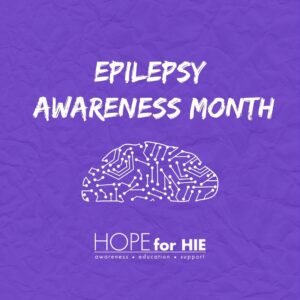
Epilepsy is a common issue affecting about 50-60% of the children with HIE (hypoxic ischemic encephalopathy), a condition that occurs when a newborn or child’s brain doesn’t get enough oxygen. This can result in different types of seizures, from more common and manageable ones to rarer and more challenging forms.
Having epilepsy can be worrying, but it’s essential to know there is hope. Hope for HIE offers support, and learning about epilepsy empowers families. Families can learn what treatments are available, and research continues to move forward to find solutions.
This month, we’re providing families with helpful information and resources. Epilepsy shows up differently as kids with HIE grow up. We want families to feel prepared, not only if their child experiences seizures but also to help others who might have one.
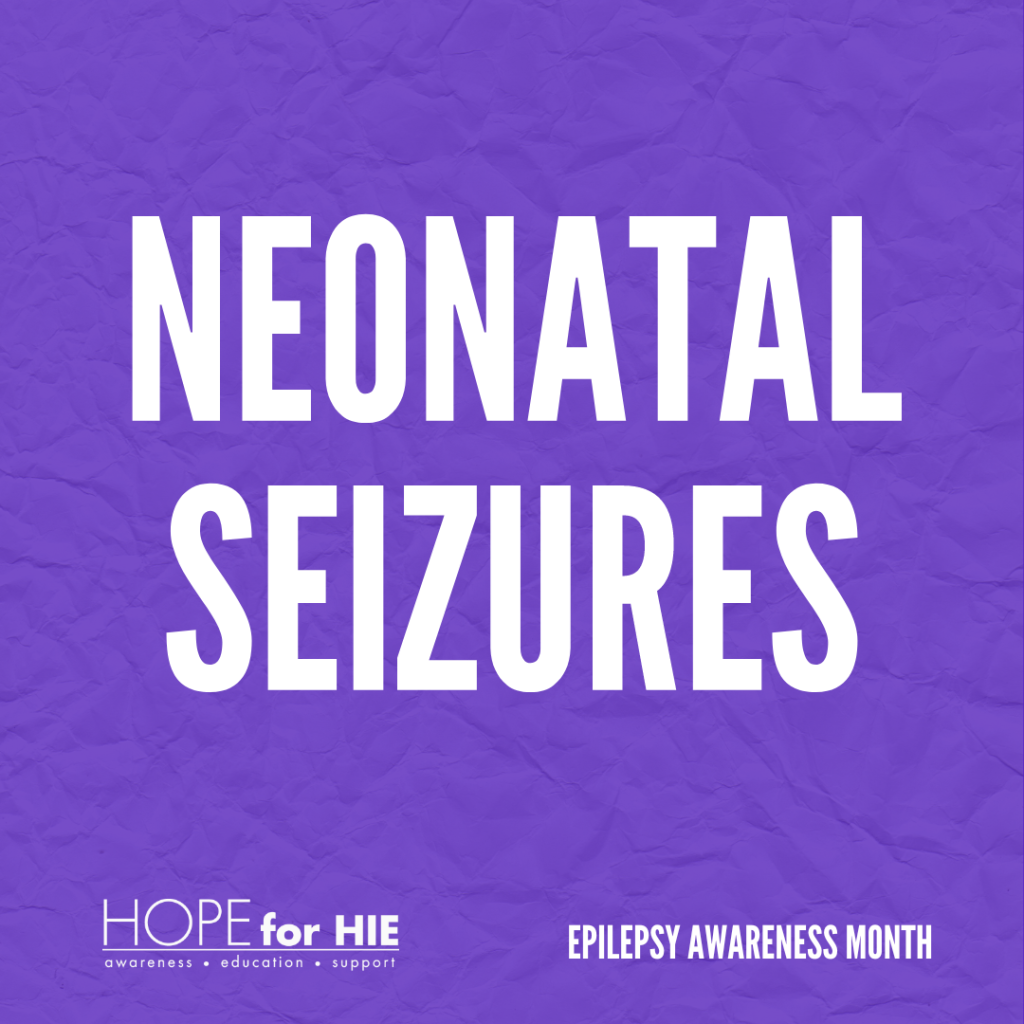
HIE and Neonatal Seizures
HIE is the leading cause of neonatal seizures. Up to 60% of babies with HIE might experience seizures at birth or injury for pediatric-acquired causes, or shortly after — in the 12-24 hours after birth or injury, due to oxygen issues in the brain.
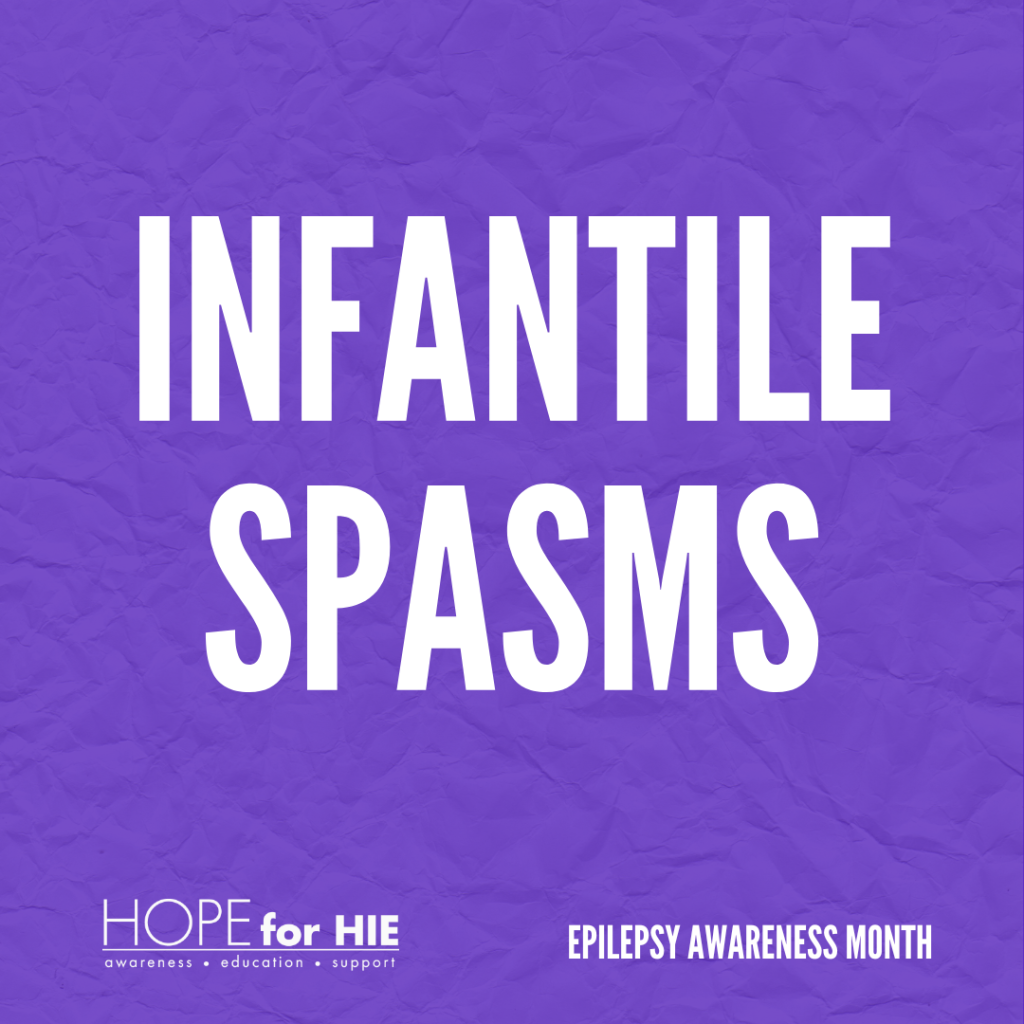
HIE and Infantile Spasms
HIE is the second leading cause of Infantile Spasms. Infantile Spasms require quick escalation of care to a medical team and the onset is considered a medical emergency, so if you think your baby might be experiencing them, do not wait.
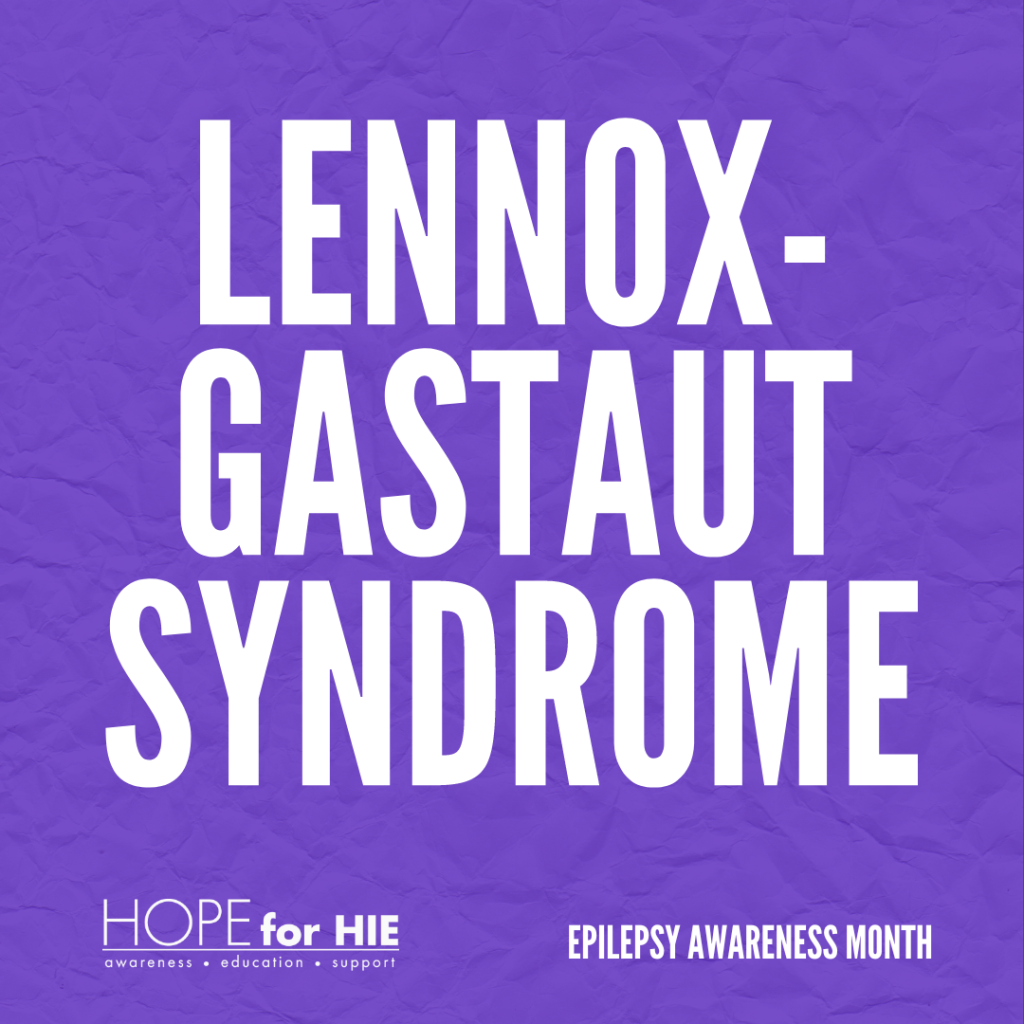
HIE and Lennox-Gastaut Syndrome (LGS)
HIE is one of the leading causes of Lennox-Gastaut Syndrome, a specific type of epilepsy that typically is associated with intractable seizures. HIE increases the risk of having epilepsy like LGS, which can be difficult to treat. However, there is exciting and hopeful research being done, and extensive resources for families facing LGS.
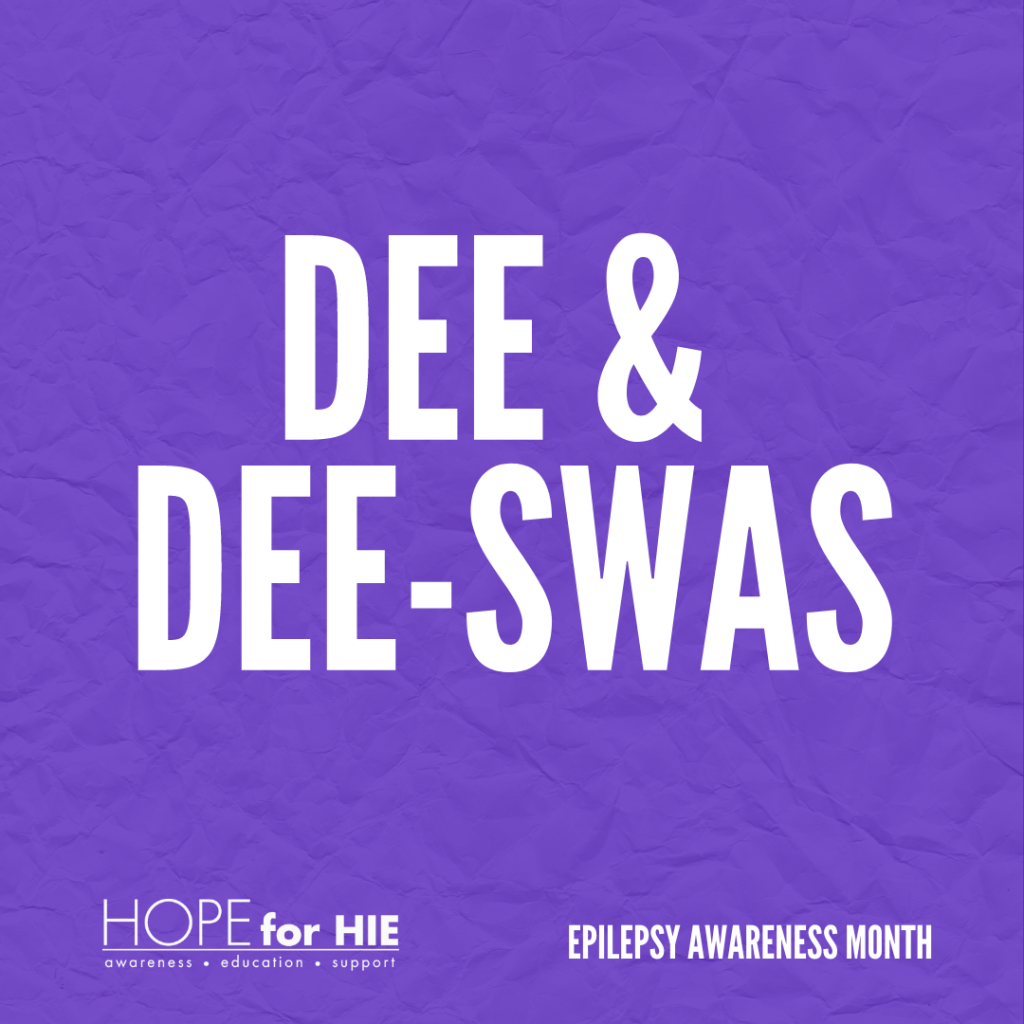
HIE and Developmental and Epileptic Encephalopathies (DEE) – including SWAS (Spike Wave Activation In Sleep)
Some children with HIE may later develop DEE, including conditions with continuous spike-wave activity during sleep. These types of epilepsy may impact learning and cognition if not caught and treated. 80% of DEEs are structural-based, and HIE is the most common structural cause.
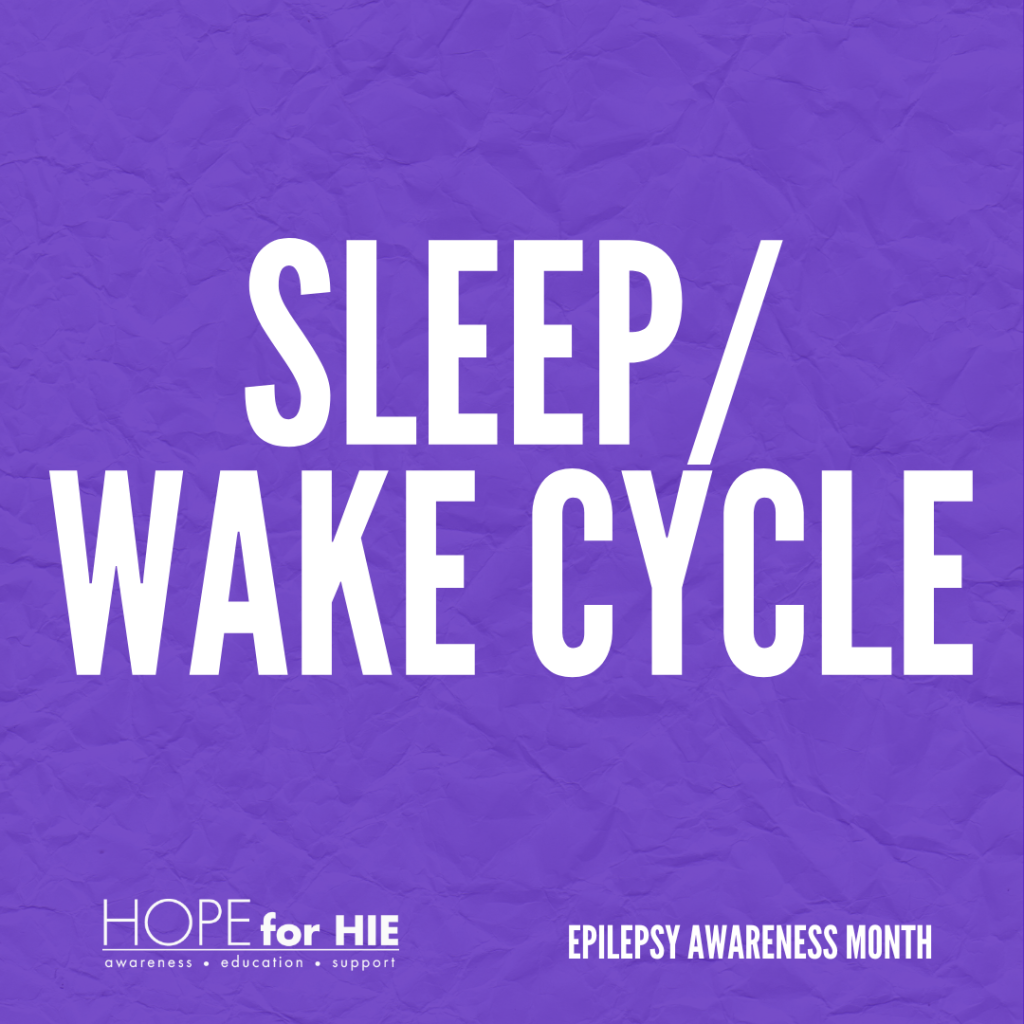
HIE in Later Childhood Onset, Especially Sleep-Wake Cycle Seizures
There’s a chance that children with HIE might have seizures linked to their sleep-wake cycle as they grow older. There is emerging research that a specific genetic pathway gets damaged from HIE that can be associated with later childhood onset epilepsy at the sleep-wake cycle.
Sometimes this gets diagnosed as Rolandic Epilepsy, Childhood Epilepsy with Centrotemporal Spikes and other naming conventions. We don’t currently know a percentage of this in published data, because it doesn’t currently exist, but we are working hard to quantify this with research teams.
Free seizure first aid training is offered by the Epilepsy Foundation. This training is beneficial for everyone, especially those caring for a child with HIE at daycare, school, home, or in the community.
A Seizure Action Plan – or SAP – incorporates tailored guidelines on how to respond during a seizure. It includes essential information that can help people react quickly and reduce the harm a seizure can do. The use of a SAP can offer more control to patients and caregivers by providing consistent, patient-specific guidance regarding seizure management. A SAP can provide clarification on patient and caregiver concerns, such as understanding what to do during a seizure, when watchful waiting is appropriate, when to intervene with at-home rescue medications, when to call 911 or go to the hospital, and much more.
For more info on these topics, check trusted sources like:
You can also watch Q&A videos on Hope for HIE’s YouTube channel about epilepsy.
To stay updated on research, we have built out our Clinical Trial & Research Study Hub.
Connect with families, read inspiring stories, and get helpful resources delivered right to your inbox.